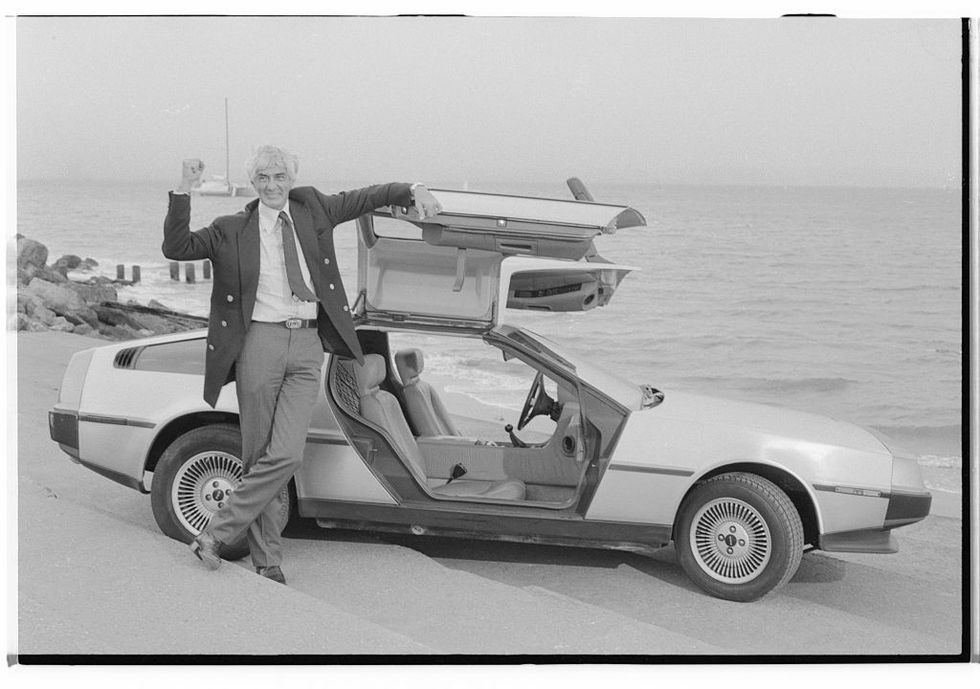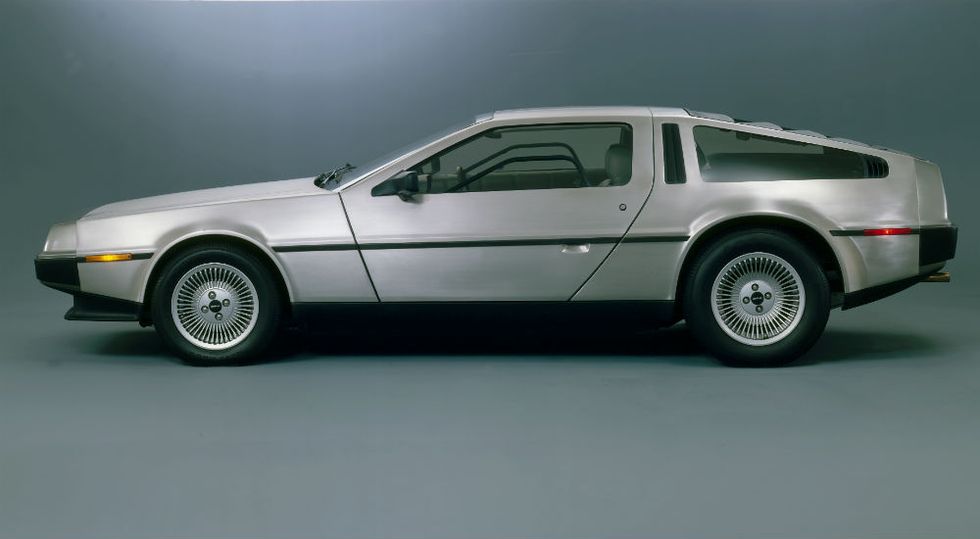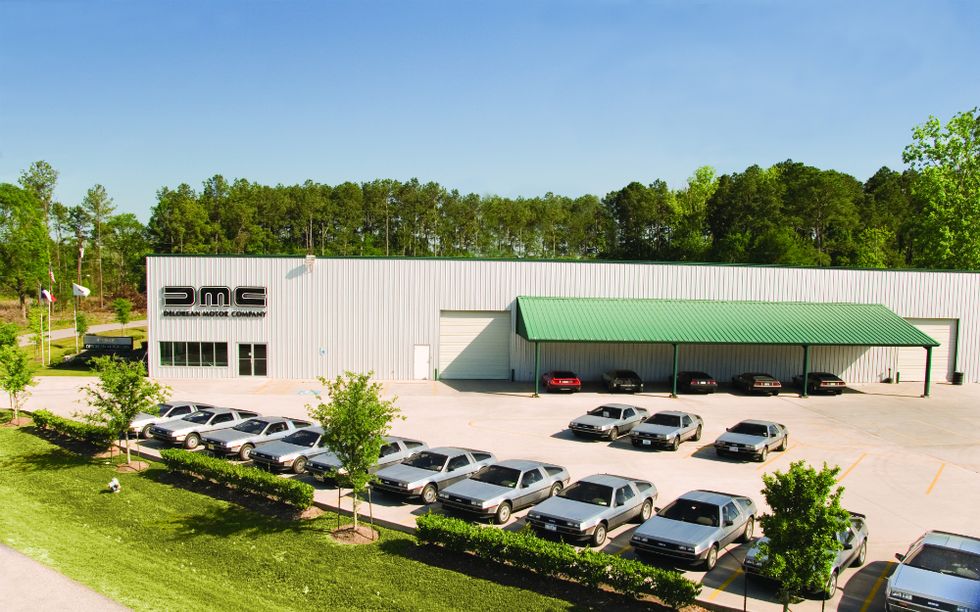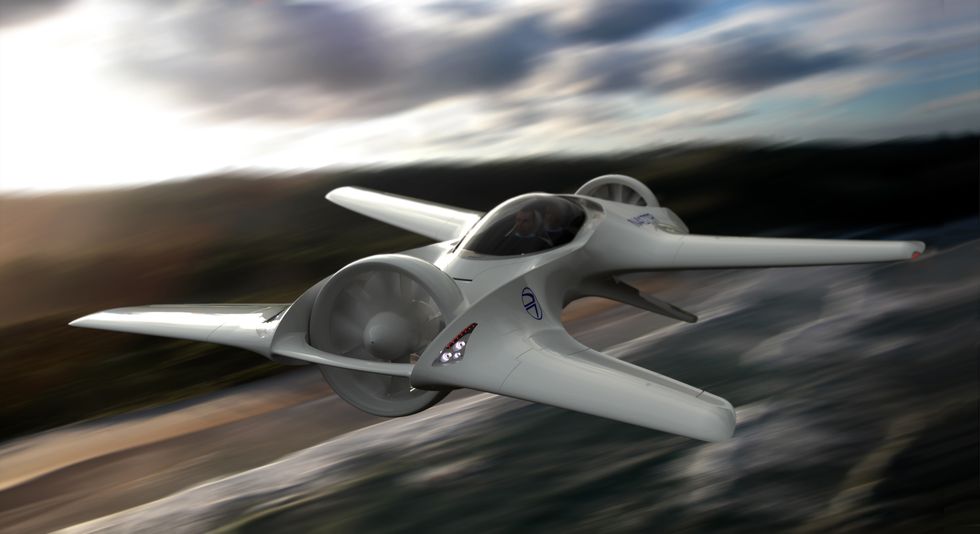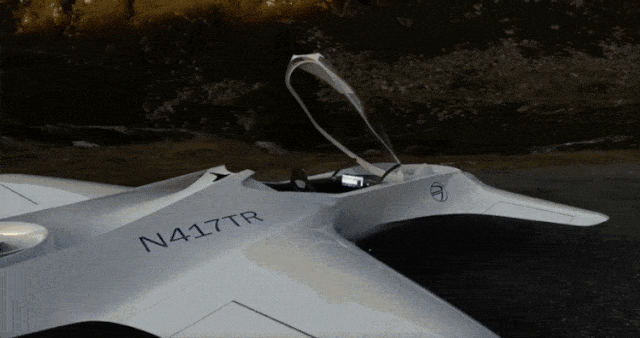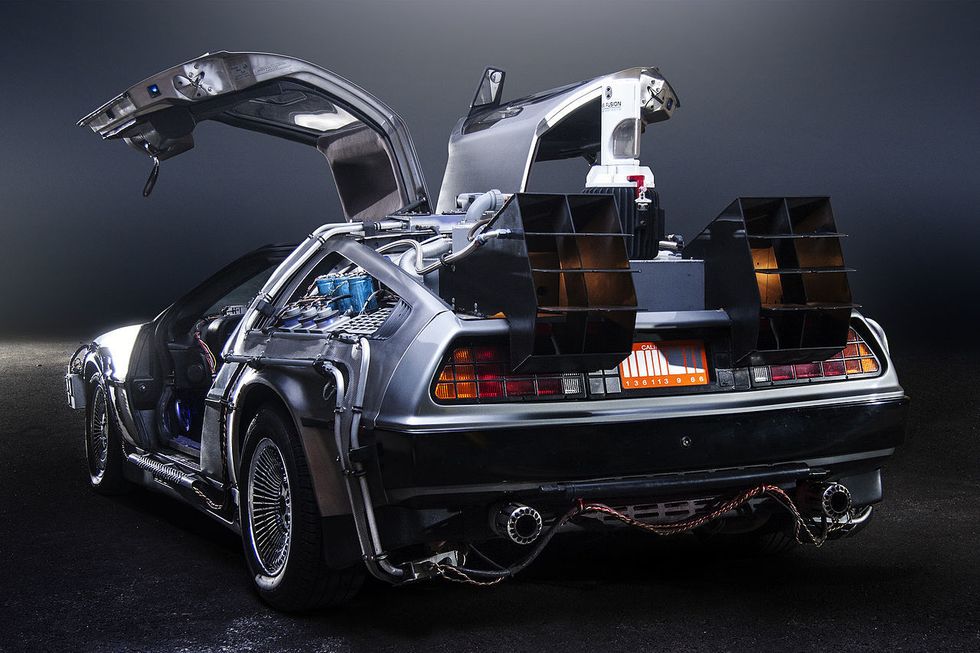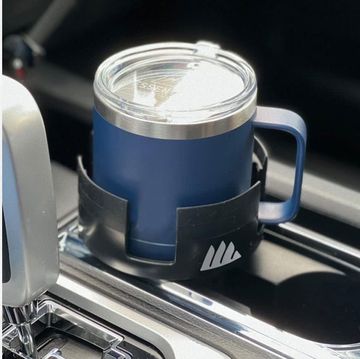It's at the beginning of Back to the Future, about 20 minutes in, when Marty McFly first sees a futuristic four-wheeled hunk of metal—outfitted with a flux capacitor—back out of a smoke-filled trailer. Turning to the wild-haired Doc Brown, McFly exclaims, "Wait a minute, Doc. Ah... are you telling me that you built a time machine... out of a DeLorean?"
For three films, the DeLorean DMC-12 would be McFly's steel-laden chariot through time, escaping to the far future of 2015 and to the distant past of the old West. But the car's starring role on screen was a far cry from its troubled experience in the real world up to that point. Now 30 years later, the DeLorean is preparing to time travel once again, revisiting its the past while also probing the future of human transportation. This is the story of the DMC-12 and its legacy, a story even stranger than the car itself.
Schematics
John Zachary DeLorean was an automobile industry legend long before the DMC-12 ever came around. The youngest person to lead a department at General Motors, he helped make the Bonneville a luxury car and turned the Catalina into a bestseller. He was responsible for the Pontiac Tempest and the Pontiac GTO, considered America's "first muscle car." In 1969, GM put him in charge of failing Chevrolet where he immediately turned a record profit. And he did it all before he turned fifty years old.
Like the cars he was creating, the "Detroit Dream Maker" lived his life fast. Good-looking and arrogant, he appeared on magazine covers and tabloid front pages. He palled around with Sammy Davis Jr. and Johnny Carson. He dated actresses like Raquel Welch and Candice Bergen. One of his girlfriends said for a Christmas gift, he gave her a leather-bound portfolio featuring photographs of himself.
By 1972, he was done with the button-up culture of GM and ready to create a luxury sports car in his image. When DeLorean formed the DeLorean Motor Company in late 1975, he hired William T. Collins, one of GM's top engineers, and Italian car designer Giorgetto Giugiaro to work on what DeLorean called the world's first "ethical" sports car.
Less than a year later, the DeLorean released the DMC-12's first prototype. Of course, it was named after its creator. The "12" represented the original plan to sell it for $12,000 (about $50,000 in today's money).
Inspired by Henry Ford's 1936 stainless steel sedan, the car featured an all-steel skin that remains one of its defining features. In a 1979 New York Times article, DeLorean praised the steel exterior because it reflected the sky's different hues and changed the car's color, not to mention that it would prevent rusting for 25 years.
DeLorean promised that the car would come in at half the weight of a Corvette with better gas mileage than a Porsche. In terms of safety, it would have all the new and required features, and those gull-wing doors were even sold as a design with safety in mind.
"They are not jarred open as easily" plus "they add sex appeal," DeLorean told The Times. DeLorean believed the DMC-12 would arrive with the same price tag as a Corvette or Porsche 924.
There was initial excitement from major automobile publications along with financial skepticism. Independent car companies going against the behemoths always had a low success rate. Most financial experts figured that after the first few years, sales momentum would be hard to maintain, especially if DeLorean couldn't pivot to lower-cost cars. But hope remained for DeLorean:
"Everybody who's tried it failed. But they don't know John," an auto analyst from Chase Manhattan Bank toldThe Times. "To be honest, if he pulled it off it would be all but a miracle... I'd almost say, only he could do it."
Brakes
The DeLorean Motor Company faced big problems from the starting line. Because of budget overruns, mechanical flaws, and poor quality control, full production on the DMC-12 didn't begin until 1981. To make things worse, an update to the prototype's design added an unexpected 500 pounds to the car, creating more cost overruns and a much pricier car at $25,000.
The delays forced DeLorean to rush the car to market, skipping planned rigorous performance testing. Engineers found out too late that the V-6 engine couldn't handle the extra weight, and so the DMC-12's performance was middling and unimpressive—it certainly couldn't match the edgy look of the car.
The company hoped to sell 10,000 to 12,000 cars, but moved just 6,000. By early 1982, the British government denied DeLorean's request for a bail out, and within in the month the company all but declared bankruptcy. The last hope evaporated on October 20, 1982, when the FBI arrested DeLorean with charges of possession of nearly 60 pounds of cocaine. The FBI said it was clear that "Mr. DeLorean's involvement in the drug operation stemmed directly from the financial difficulties of DeLorean Motors."
That same day, the British government officially closed DeLorean's plant in Ireland. Although a jury later found DeLorean not guilty on all drug charges, the damage was done. The DeLorean DMC-12 was being towed to the salvage yard of history.
Then Doc Brown came along.
Bob Gale, the writer of Back to the Future, told Popular Mechanics in 1985 that the filmmakers chose the DeLorean because it resembled a futuristic spaceship and it looked like a "homemade time machine Dr. Brown could pull together working in his shop." It was a match made in movie heaven. Gale recalled to the Los Angeles Times that DeLorean wrote a letter thanking the film's producers for "keeping my dream alive."
The rest is cinematic history. The DMC-12 appeared in all three Back to the Future movies, which turned a car destined to be forgotten into an icon of the screen and a car with a cult following. Now, more than three decades since its silver screen salvation, the DeLorean DMC-12 may be on its way back to the past.
Reignition
When DeLorean opened his factory in 1981, the company had enough parts to build 30,000 cars. Only a third of them were used before DeLorean went belly-up. In 1983, the remaining parts were shipped to a storage facility in Columbus, Ohio.
Over the next decade, sporadic requests for these parts came from DeLorean owners around the world, including Stephen Wynn, who had a shop in California specializing in fixing DeLoreans. Wynn's shop was so popular that he opened a second location near Houston and called it the DeLorean Motor Company of Texas. To fulfill the increasing demand to repair old DeLoreans, he decided to buy up the remaining inventory of dusty parts along with exclusive distribution rights. While unaffiliated with the original incarnation of DeLorean Motors, Wynne reanimated the long-dead company with John DeLorean's blessing before the death of the DMC-12's namesake in 2005.
"Everybody has a DeLorean story," says James Espey, Vice-President of today's DeLorean Motor Company, "I'll be at a gas station and someone will come up and say, 'Hey, that's a DeLorean! My next-door neighbor's brother had a cousin who's girlfriend's dad had one of these...They all want to sit in it and take pictures."
In 2007, with full rights to the DeLorean name, the Humble,Texas-based company began rebuilding DeLoreans from stripped frames. While they were able to make a dozen or two per year, it didn't even come close to fulfilling demand. Four years later, they revealed a "proof of concept" vehicle for an all-electric DeLorean—named the DMCEV—and announced that the car would be available by 2013. But like its predecessor, the electric DMC hit a snag and couldn't find a technology partner, so the car would remain an elusive dream.
"We decided at the time to stick with the (internal combustion engine) versions of the DeLorean," Espey told Popular Mechanics, but says they may revisit the EV dream in the next few years.
In December 2015, the company again changed direction when, as part of a larger highway construction bill, the "Low Volume Motor Vehicle Manufacturers Act" (H.R. 2675) was signed into law. The provision allowed small auto manufacturers to produce up to 325 replicas a year of a car originally produced at least 25 years ago without being subjected to the same regulations as a company making millions of automobiles. This led to DMC announcing that they would be going into production on replica DeLoreans using the old stockpile of leftover parts from 1981, new reproduction parts, updated components, and modern engines. They even started taking pre-orders.
But DeLorean's name seemed to haunt the small automotive startup like a lingering curse. The replicas are still subject to federal regulatory oversight. But what are those regulations? No one knows.
Espey says that the due to the National Highway Traffic Safety Administration(NHTSA) lacking a director or a chief consul (as of this writing, the current administration has not nominated anyone), regulations have yet to be released for this program two years after the bill was signed.
"I don't think anybody is going to go into production," Espey says, "because you don't know if (the cars are) something that you can legally sell."
Until this day, it's release date remains unknown.
Where We're Going....
While the DeLorean Motor Company wait for their fate on the ground, another company born from DeLorean's legacy is looking to go somewhere where we don't need roads. Paul DeLorean, John's nephew and CEO of DeLorean Aerospace, is developing "a Formula One race car...for the sky."
Despite the catchy slogan, DeLorean explains that it's "absolutely not a flying car." The DR-7 VTOL is a two-seat, fully-electric airplane that has vertical takeoff and landing (VTOL) capabilities and will be sold strictly as a consumer product—as opposed to a fleet, like Uber Elevate.
DeLorean said he designed the aircraft for commuting, but he's already had interest from the military, law enforcement, search and rescue, and first responders. The futuristic aircraft could one day be fully autonomous. "Unmanned would be a fantastic application," Delorean told Popular Mechanics. "you could have 10 or 20 of these on a rooftop somewhere...and they would get there in the fraction of the time."
DeLorean is aware all of this is a no small task, but much like his uncle, he wants to revolutionize how humans move. With his father working on the original Ford Mustang, Paul spent many hours in his dad's shop and eventually went on to work at GM, where he helped design Cadillacs and Saabs. He moved over to Mattel in 2011, where he was a designer for Hot Wheels.
During his free time, he sketched and developed his concept for a personal aircraft that would appeal to daily commuters, adventurers, emergency services, and enthusiasts. "Originally, it was gas-powered, kinda steampunk-looking, and had lots of parts," DeLorean tells Popular Mechanics.
In 2012, he founded DeLorean Aerospace specifically to create his dream vehicle. He knew that invoking his uncle's name would turn heads. In fact, he was counting on it. "It's helped more than hurt so far," says DeLorean.
Tweaking the original aircraft design, he applied for a patent and was granted one in June 2015. It was just this past August when he made the announcement that the company had built two operational scale models. DeLorean expects a full prototype will be ready for a test flight by the end of 2018.
While there are other contenders attempting to take to the skies, DeLorean says his aircraft stands apart because of its increased range. While the other hopefuls top out at 50 miles per charge, the DR-7 VTOL will fly for 120 miles or more. DeLorean says he didn't design the aircraft to look pretty, but to have the lowest drag coefficient possible in order to optimize range. The hope is to keep the price under $300,000 and put the flying DeLorean on the market within five years.
While this sounds like an unrealistic timeline, Missy Cummings, aerospace engineer, pilot, and professor at Duke University who co-wrote a study on these aerial vehicles, says the five-year mark is actually reasonable. But the big question that remains is who's actually going to them.
"General aviation today in this country is dying," says Cummings, due to the soaring costs of pilot certification, maintenance, gas, and storage. "I don't think he's going to find enough people who are going to want a plane like that."
While Cummings is generally in favor of all-electric aviation, the idea needs more data and testing to make sure that the batteries don't catch fire. The last thing you want is to be airborne and in flames.
And history shows that the odds for success aren't exactly favorable. Other ambitious transportation startups have been promising that personal "flying cars" are just a few years away for decades, but the skies remain the undisturbed domain of commercial aircraft, recreational drones, and our feathered friends.
So for now, the DMC-12 remains stuck in time. One company hopes to relive the car's iconic past, while another tries to use its name to soar into the future. But as Doc Brown says, the "future is whatever you make it," and if John Z. DeLorean's legacy has anything to say about it, that future will at least have some style.
Matt is a history, science, and travel writer who is always searching for the mysterious and hidden. He's written for Smithsonian Magazine, Washingtonian, Atlas Obscura, and Arlington Magazine. He calls Washington D.C. home and probably tells way too many cat jokes.



